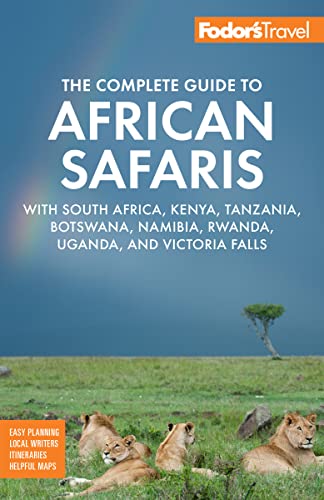In the Great Rift Valley south of Serengeti and the Ngorongoro Crater lies the Cinderella of Tanzania's parks—the often overlooked and underrated Lake Manyara National Park. When Ernest Hemingway faced the rust-red rocks of the almost 2,000-foot-high rift valley escarpment that dominates the park, he called it "the loveliest place I have seen in Africa."
Lake Manyara National Park is small, stretching only some 330 square km (127 square miles) along the base of the escarpment with two-thirds of its surface taken up by shallow, alkaline Lake Manyara. This serene lake is one of the so-called Rift Lakes, which stretch like jewels along the floor of the Rift Valley.
The park may be small, but what it lacks in size it makes up for in diversity. Its range of ecosystems at different elevations makes for dramatic differences in scenery. At one moment you’re traveling through a fairy-tale forest of tumbling, crystal-clear streams, waterfalls, rivers, and ancient trees; the next you're bumping over flat, grassy plains that edge the usually unruffled lake, pink with hundreds of flamingos.
In the deep forest where old tuskers still roam, blue monkeys swing among huge fig and tamarind trees, giant baobabs, and mahoganies, using their long tail as an extra limb. They've got orange eyes, roman noses, and wistful expressions. In the evenings as motes of dusty sunlight dance in the setting sun, there's an excellent chance of spotting troops of more than 300 olive baboons (better looking and furrier than their chacma cousins) sitting in the road, grooming each other, chatting, and dozing, while dozens of naughty babies play around them and old granddaddies look on with knowing eyes.
The thick, tangled evergreen forest eventually gives way to woodlands with tall, flat-top acacias and fever trees, and finally to open plains where hundreds of elephants, buffalo, and antelope roam, accompanied by Masai giraffes so dark they look as if they’ve been dipped in chocolate. This is a great place to see hippos at close hand as they lie on the banks of the lake, or as they begin to forage as dusk approaches. The park is known for its tree-climbing lions, which aren’t common to see, but you can be sure if one vehicle glimpses them then the "bush telegraph" (ranger walkie-talkie chatter) will quickly reach your truck, too. No one really knows why they climb and roost in trees, but it's been suggested by one former warden of the park that this unusual behavior probably started during a fly epidemic when the cats climbed high to escape the swarms of biting flies on the ground. He suggests that the present ongoing behavior is now part of their collective memory.
If you're a birder then put this park on your must-visit list. Because of the great variety of habitats, there’s a great variety of birds; more than 400 species have been recorded. As you drive through the forest you'll hear the Silvery-cheeked hornbills long before you see them flapping noisily in small groups among the massive trees, braying loudly as they fly. The edges of the lake as well as its placid surface attract all manner of water birds large and small. Along the reed-fringed lakeshore you'll see huge pink clouds drifting to and fro. These "clouds" are flocks of flamingos. White-backed pelicans paddle through the water as the ubiquitous African fish eagles soar overhead. Other water birds of all kinds congregate—waders, ducks, geese, storks, spoonbills, egrets, and herons. In the thickets at the base of the red escarpment overlooking the lake, which angles up dramatically at 90 degrees, watch out for Nubian woodpeckers, the very pretty and aptly named silver birds (flycatchers), superb, ashy, and Hildebrand's starlings, yellow wagtails, trilling cisticolas, red-cheeked cordon bleus, Peter's twinspots, bluenecked mousebirds, and every cuckoo imaginable. The Red-and-yellow barbet is known as the "bed-and-breakfast bird" for its habit of living where it eats—in termite mounds. The park is also a raptor's paradise, where you can spot up to 51 daytime species, including dozens of augur buzzards, small hawks, and harriers. Deep in the forest you might be lucky enough to see Africa's most powerful eagle, the crowned eagle, which is strong enough to carry off young antelope, unwary baboons, and monkeys. At night listen for up to six different kinds of owls, including the giant eagle owl and the diminutive but very vocal African Scops owl.






